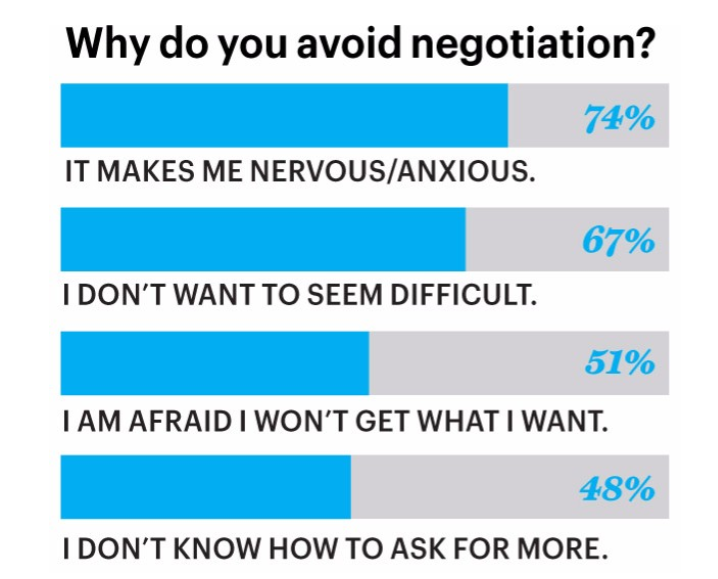
Negotiation in Practice
After establishing the basic principles of negotiation, it is time to talk about conducting negotiations: how to begin negotiations, build a strong foundation, deal with challenges and close the deal. Being mindful of these realities will help you greatly in becoming a better negotiator.
Understanding Power
Power is a central factor in determining the outcomes of the negotiation process. Effective negotiators understand that power is not static and thus engage in continuously assessing and enhancing it. It is, however, equally important to know how to negotiate when you do not have power. You should take care to ensure you understand and constantly evaluate your power during the negotiation process.
There are many sources of power in negotiation. Of course, the party that has more resources and information has a significant advantage in the power stakes, as they can be said to have a stake in the pie and understand both their position and their counterpart’s. If a party’s negotiation skills are high, they also possess the power to produce better outcomes for themselves and for other parties.
These are direct assets that have an impact on your negotiating power. However, there are other factors from which you can source power. If you are not pressed for time, you have the power to wait out the negotiations and exploit future opportunities. If you are willing to let go of sunk costs, for example (be they emotional or financial), you are less tied to the negotiating table.
Arguably the greatest source of power is not needing the deal at all. The less badly you need the deal, the more power you have not to settle for it. If what is negotiated is anything other than optimal, you can simply walk away. Here, having an attractive alternative to a negotiated agreement is ideal as it gives you the power to negotiate for higher and leave the table if needed.
Negotiating from a weak position

Not having a significant advantage in one of these sources of power can leave you weak. However, you can still negotiate effectively even if your position is weak. Everybody has some value that they can provide to somebody else or strength in other areas, so the idea is to focus on that rather than any deficiencies you may have and use them as leverage.
The first rule is to never reveal to your counterpart that your position is weak in the first place. As well as protecting you from being taken advantage of, there is also the possibility of new opportunities or information that can arise at any point that you can use for your negotiating position, or indeed your attractive alternative.
You should never make “all or nothing” deals from a weak position; this only serves to exude desperation, and you may lose out on a better deal down the line. Rather, make deals sequentially and in small chunks. This way, your counterpart is more likely to recognise your value, and is also more likely to respect your deal breakers.
Finally, when in a weak position, do not underestimate the power of personal likeability. People do business with people they like and whom they can trust to keep their promises and deliver good value. Likeability and integrity are especially valuable traits in the long-term; weakness, like power, is not static, and you may be able to gain power and secure even greater benefits at a later stage.
The opening offer
Some believe that you should never make the first offer, so you can assess the situation properly. Others believe you can set the tone of negotiation with a strong first offer. Skilled negotiators will not necessarily swear by one; rather, they choose to tailor their approach to each negotiation.
The main rule generally is to only make the first offer when you are confident in the thoroughness of your due diligence and also when you suspect that the other party is ill-informed. By going first, you will “anchor”, or set a benchmark, that will be used as a reference point for the counteroffer.
If however, you are not fully informed, do not go first. Consider the other party’s first offer, do not respond to it immediately if possible, and do your due diligence. Rushing into such a decision may leave you exposed, vulnerable to being taken advantage of, and with sub-optimal results.
It is easy to be thrown off if the other party’s opening offer is extremely tough. Effective negotiators make sure they are not startled by such tactics and avoid giving an emotional reaction. Instead, ensure that that a bad opening offer does not become the benchmark for the negotiation. You can reject the offer as unreasonable; ask them to revise the offer; or ask for a justification of their offer.
If you are making the first offer, do not start off too low or too high. An offer too low may leave you with sub-optimal results at the end, but an offer too high may risk your credibility and offend your counterpart. Try to find a middle ground. Make an offer that is bold and daring – these offers are reasonably high, tend not to be acceptable, but are still negotiable.
Concessions
In negotiations, there will inevitably be concessions to give. As a result, experienced negotiators tend to develop offers that leave room for concessions, knowing that this is the lifeblood of any successful negotiation. The size, type, and timing of the concession all have great importance.
There are no absolute rules to making concessions. If there was one, it would most likely be to make small concessions throughout negotiations as opposed to one massive one. Skilled negotiators will tend to do this in order to increase the level of satisfaction of their counterparts gradually. In contrast, one solitary concession may end up being unsatisfactory to all parties.
The size of the concession matters too. Inexperienced negotiators often make a first sizeable concession as an expression of goodwill. However, this can lead to the perception that there are many more concessions to be had. Experienced negotiators will separate the relationships from the concessions; they may concede first by making a concession, but only on a minor issue.
Wait before you make the first sizeable concession. During this time, advocate for your initial offer and convey the idea that it is not that easy to make concessions. The second concession should be smaller in size than the first and be a longer time in coming. Making concessions in progressively declining instalments will then lend more credibility to when you finally say: “There is no more to give”.
You should also think carefully about the timing of your first sizable concession. If you make it too soon after your initial offer, it may send a signal to the other party that your initial offer was not a credible one. This can give off an impression of weakness, desperation and general inexperience in the art of negotiation.
Dealing with deadlock, avoiding decision traps and managing emotions
You will inevitably come across roadblocks and challenges in the negotiating process. It is here where empathy and intuition become your greatest friends; prior to and during negotiations, you will need to maintain a high level of sensitivity to the concerns, feelings and self-image of your counterpart in order to overcome any challenges at the negotiating table.
This is critical when facing an impasse in the negotiations. Any deadlock needs to be met with care so as not to heighten any tensions. You should be sure to highlight the agreements already achieved during the negotiation process and the potential losses to both parties if an agreement is not reached.
If that does not work, you may have to use your creativity to expand the benefits on offer. Expand the issues you are discussing without making any concessions and make the potential benefits attractive to your counterpart. Always remember that the purpose of negotiation is not to win an argument, but to find solutions that maximise the benefits for both parties.
You must also be wary of decision traps which even the most skilled of negotiators can fall into if they are not careful. These can include escalation of commitment to your own detriment, using a faulty anchor, overconfidence, generalisation and more. These are easily avoided by maintaining a cool demeanour, thinking logically and strategically, and preparing adequately before negotiations start.
Nonetheless, how one manages emotions can have a significant impact on the result of negotiations. Adopting a positive demeanour, a negative demeanour or a poker face all have their strengths and weaknesses. Effective negotiators try to synchronise their behaviour with the other person’s, developing an interpersonal rhythm that reflects a shared emotional state.
Generally speaking, a positive approach produces more constructive results. However, a poker face may be beneficial to avoid vulnerabilities, and a negative approach may force the other party to agree to their demands. You may have to employ all three depending on the situation, using your emotional intelligence to regulate your own emotions and emphasise with the other party successfully.
Countering competitive tactics
You may have to deal with manipulative negotiators that use aggressive and competitive tactics to maximise their own benefits and disregard yours. They may believe that their tactics are quite effective. However, these tactics can often backfire, escalating the negotiations and causing resentment on all sides. Skilled negotiators should know how to avoid and neutralise these traps.
Manipulative negotiators assume you are emotionally weak. They may use emotional blackmail to influence you, pressure you with aggressive tactics or force you for time. To avoid this, you should maintain a clear mind, holding onto your objectives and benchmarks that you set before negotiations began, and use your judgement to think rationally about whether the pressures set are real or not.
If a competitive negotiator assumes you lack power in the areas aforementioned at the start of this article, they will prey on that. If they think you are ill-informed, they may persistently give you sub-optimal offers. If they believe you are a naïve negotiator, they may try to force you agree on single issues to prevent you creating opportunities for trade-offs. Make sure you study these tactics and prepare beforehand so as to not be disadvantaged on the negotiating table.
Closing the deal
Closing the deal may seem insignificant, but it is often the start of a collaborative process between you and the other party. You should understand that both parties may have obligations to fulfil, so make sure that no-one overcommits and everybody is happy with the final agreement.
As many stakeholders should be included as possible in the implementation process. This allows both parties to share any concerns as the process develops, and changes to be incorporated in the agreement when necessary. This will lead to the development of trust and a mutually beneficial relationship between both parties.
This concludes Part 2 of the negotiation articles. Part 3 will focus on the cultural differences in negotiation from region to region, with a specific focus on the UK and Saudi Arabia.
